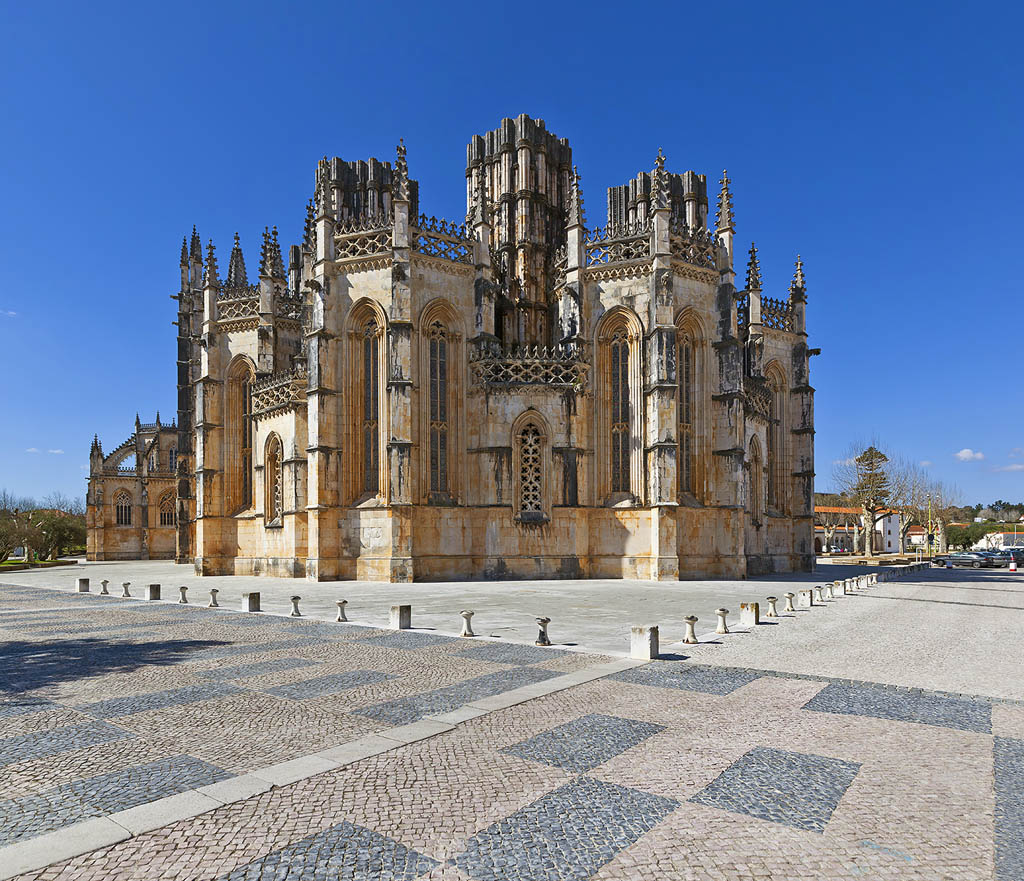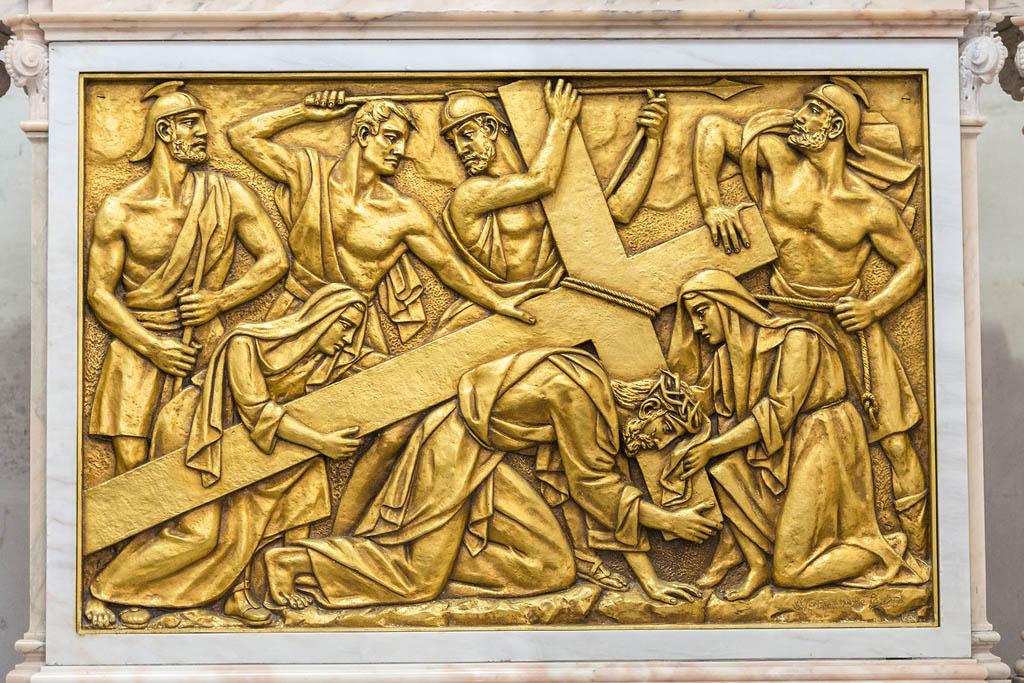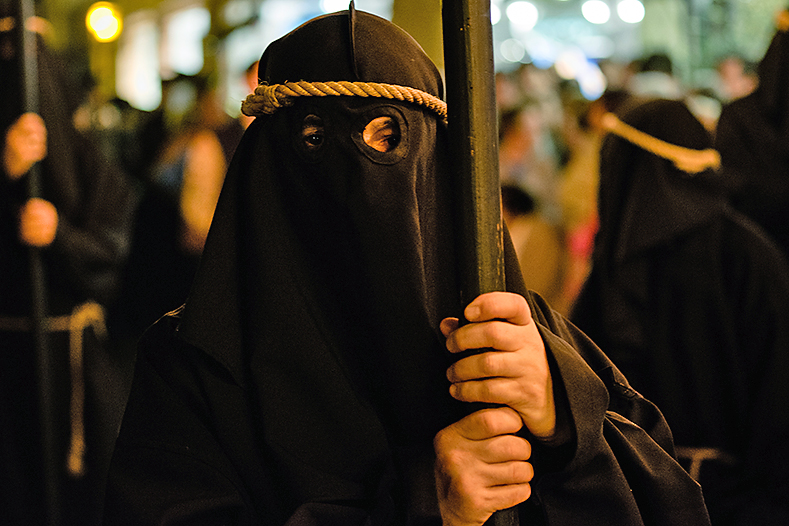Religion
Christianity has been a powerful force in shaping Portugal’s history, and religion still plays an important role in the lives of its people. Churches and cathedrals are sprinkled across the country, and Portugal’s biggest celebrations revolve around religious events. Portugal is also home to a number of pilgrimage sites, the most important of which, Fátima, attracts several million pilgrims each year.

Church & State
Portugal has a deep connection to the church. Even during the long rule of the Moors, Christianity flourished in the north – which provided a strategic base for Christian crusaders to retake the kingdom. Cleric and king walked hand in hand, from the earliest papal alliances of the 11th century through to the 17th century, when the church played a role both at home and in Portugal’s expanding empire.
Things ran smoothly until the 18th century, when the Marquês de Pombal, a man of the Enlightenment, wanted to curtail the power of the church – specifically that of the Jesuits, whom he expelled in 1759. He also sought to modernise the Portuguese state (overseeing one of the world’s first urban ‘grid’ systems) and brought education under the state’s control. State–church relations see-sawed over the next 150 years, with power struggles including the outright ban of religious orders in 1821 and the seizing by the state of many church properties.
The separation of church and state was formally recognised during the First Republic (1910–26). But in practice the church remained intimately linked to many aspects of people's lives. Health and education were largely under religious auspices, with Catholic schools and hospitals the norm. Social outlets for those in rural areas were mostly church related. And the completion of any public-works project always included a blessing by the local bishop.
In 1932 António de Oliveira Salazar swept into power, establishing a Mussolini-like Estado Novo (New State) that lasted until the 1974 Revolution of the Carnations. Salazar had strong ties to the Catholic church – he spent eight years studying for the priesthood before switching to law. His college roommate was a priest who later became the Cardinal Patriarch of Lisbon. Salazar was a ferocious anticommunist, and he used Roman Catholic references to appeal to people’s sense of authority, order and discipline. He described the family, the parish and the larger institution of Christianity as the foundations of the state. Church officials who spoke out against him were silenced or forced into exile.
Following the 1974 revolution, the church found itself out of favour with many Portuguese; its support of the Salazar regime spelt its undoing in the topsy-turvy days following the government’s collapse. The new constitution, ratified in 1976, again emphasised the formal separation of church and state, although this time the law had teeth, and Portugal quickly transitioned into a more secular society. Today, only about half of all weddings happen inside a church. Divorce is legal, as is abortion (up to 10 weeks; the law went into effect following a 2007 referendum). In 2010 same-sex marriage was legalised, making Portugal the sixth European nation to permit it (with several other nations joining the ranks in recent years).

Life Under Muslim Rule
The Moors ruled southern Portugal for almost 400 years, and some scholars describe that time as a golden age. The Arabs introduced irrigation, previously unknown in Europe. The Moors opened schools and set about campaigns to achieve mass literacy (in Arabic, of course), as well as the teaching of mathematics, geography and history. Medicine reached new levels of sophistication. There was also a degree of religious tolerance, but this evaporated when Christian crusaders came to power. Much to the chagrin of Christian slave owners, slavery was not permitted in the Islamic kingdom – making it a refuge for runaway slaves. Muslims, Christians and Jews all peacefully coexisted, and at times even collaborated, creating one of the most scientifically and artistically advanced societies the world had ever known.
The Inquisition
'After the earthquake, which had destroyed three-quarters of the city of Lisbon, the wise men of that country could think of no means more effectual to preserve the kingdom from utter ruin than to entertain the people with an auto-da-fé…'
– Voltaire, Candide
One of the darkest episodes in Portugal’s history, the Inquisition was a campaign of church-sanctioned terror and execution that began in 1536 and lasted for 200 years, though it was not officially banned until 1821. It was initially aimed at Jews, who were either expelled from Portugal or forced to renounce their faith. Those who didn’t embrace Catholicism risked facing the auto-da-fé (act of faith), a church ceremony consisting of a Mass, a procession of the guilty, the reading of their sentences and, later, their burning at the stake.
‘Trials’ took place in public squares in Lisbon, Porto, Évora and Coimbra in front of crowds sometimes numbering in the thousands. At the centre, atop a large canopied platform, sat the Grand Inquisitor, surrounded by his staff of aristocrats, priests, bailiffs, torturers and scribes, who meticulously recorded the proceedings.
The victims usually spent years in prison, often undergoing crippling torture, before seeing the light of day. They stood accused of a wide variety of crimes – such as skipping meals on Jewish fast days (signs of ‘unreformed’ Jews), leaving pork uneaten on the plate, failing to attend Mass or observe the Sabbath, as well as blasphemy, witchcraft and homosexuality. No matter how flimsy the ‘evidence’ – often delivered to the tribunal by a grudge-bearing neighbour – very few were found not guilty and released. After a decade or so in prison, the condemned were finally brought to their auto-da-fé. Before meeting their judgement, they were dressed in a san benito (yellow penitential gown painted with flames) and a coroza (high conical cap) and brought before the tribunal.
After the sentence was pronounced, judgement was carried out in a different venue. By dawn the next morning, for instance, executioners would lead the condemned to a killing field outside town. Those who repented were strangled before being burnt at the stake. The unrepentant were simply burnt alive.
During the years of the Inquisition, the church executed over 2000 victims and tortured or exiled tens of thousands more. The Portuguese even exported the auto-da-fé to the colonies, burning Hindus at the stake in Goa, for instance.
As Voltaire sardonically suggested, superstition played no small part in the auto-da-fé. Some believers thought that the earthquake of 1755 was the wrath of God upon them, and that they were being punished – not for their bloody auto-da-fés but because the Holy Office hadn’t done quite enough to punish the heretics.
Crypto Jews
When Manuel I banned Judaism, most Jews fled or converted. Some, however, simply hid their faith from public view and wore the facade of being a New Christian (the name given to Jewish converts). Religious ceremonies were held behind closed doors, with the Sabbath lamp placed at the bottom of a clay jar so that it could not be seen from outside. Within their Catholic prayer books Jews composed Jewish prayers, and they even overlaid Jewish prayers atop Catholic rituals (like the making of the sign of the cross).
One Crypto-Jewish community in Belmonte managed to maintain its faith in hiding for over 400 years and was only revealed in 1917. No longer underground (Belmonte now has its own synagogue and Jewish cemetery), members of the community remain quite secretive about the practices they maintained in hiding.
The Apparitions at Fátima
For many Portuguese Catholics, Fátima represents one of the most momentous religious events of the 20th century, and it transformed a tiny village into a major pilgrimage site for Catholics across the globe. On 13 May 1917, 10-year-old Lúcia Santos and her two younger cousins, Jacinta and Francisco Marto, were out tending their parents’ flocks in the fields outside the village of Fátima. Suddenly a bolt of lightning struck the earth, and a woman ‘brighter than the sun’ appeared before them. According to Santos, she came to them with a message exhorting people to pray and do penance to save sinners. She asked the children to pray the rosary every day, which she said was key to bringing peace to one’s own life and to the world. At the time, peace was certainly on the minds of many Portuguese, who were already deeply enmeshed in WWI. She then told the children to come again on the 13th of each month, at the same time and place, and that in October she would reveal herself to them.
Word of the alleged apparition spread, although most who heard the tale of the shepherd children reacted with scepticism. Only a handful of observers came to the field for the 13 June appearance, but the following month several thousand showed up. That’s when the apparition apparently entrusted the children with three secrets. In the weeks that followed, a media storm raged, with the government accusing the church of fabricating an elaborate hoax to revive its flagging popularity. The church, for its part, didn’t know how to react. The children were even arrested and interrogated at one point, but the three refused to change their story.
On 13 October 1917, some 70,000 people gathered for what was to be the final appearance of the apparition. Many witnesses there experienced the so-called Miracle of the Sun, where the sun seemed to grow in size and dance in the sky, becoming a whirling disc of fire, shooting out multicoloured rays. Some spoke of being miraculously healed; others were frightened by the experience; still others claimed they saw nothing at all. The three children claimed they saw Mary, Jesus and Joseph in the sky. Newspapers across the country reported on the event, and soon a growing hysteria surrounded it.
Only Lúcia made it into adulthood. Jacinta and Francisco, both beatified by the church in 2000, were two of the more than 20 million killed during the 1918 influenza epidemic. Lúcia later became a Carmelite nun and died at the age of 97 on 13 February 2007.
 oReligious Events
oReligious Events
Semana Santa (Braga)
Festa de São João (Porto & Braga)
Festa de Santo António (Lisbon)
Fátima Romaris (Fátima)
Romaria de Nossa Senhora d’Agonia (Viana do Castelo)
Festa de Nossa Senhora dos Remédios (Lamego)

Faith on the Decline
The percentage of Portuguese who consider themselves Catholics (around 85%) ranks among the highest in Western Europe. The number of the faithful, however, has been on a steady decline since the 1970s, when over 95% of the nation was Catholic. Today nearly half a million residents describe themselves as agnostic, and less than 20% of the population are practising Catholics.
Regional differences reveal a more complicated portrait: around half of northern Portugal’s population still attend Sunday Mass, as do more than a quarter in Lisbon – with noticeably fewer churchgoers on the southern coast.
 oFátima Books & Films
oFátima Books & Films
oThe Fourth Secret of Fátima (2006), written by Antonio Socci
oThe 13th Day (2009), directed by Ian and Dominic Higgins
oMiracle of Our Lady of Fátima (1952), directed by John Brahm